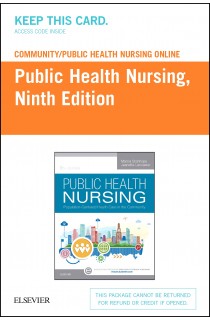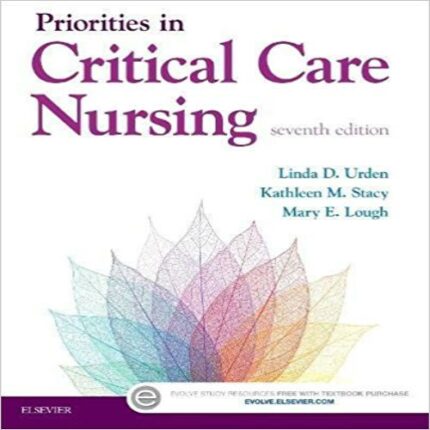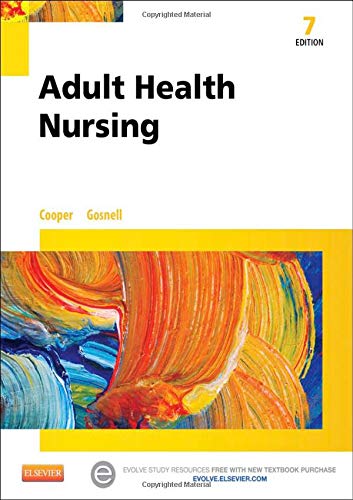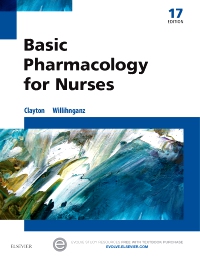Public Health Nursing Population Centered Health Care in the Community 9th Edition by Marcia Stanhope – Test Bank
Chapter 05: Economics of Health Care Delivery
Stanhope: Public Health Nursing: Population-Centered Health Care in the Community, 9th Edition
MULTIPLE CHOICE
1.Which statement regarding poverty and health insurance is true?
|
a. |
Millions of people in the United States are without health insurance. |
|
b. |
The poor in the United States are as healthy as persons with higher incomes. |
|
c. |
Persons with money or health insurance are less likely to seek health care. |
|
d. |
The poor are more likely to receive health care through private agencies. |
ANS: A
In 2012, 48 million people were without health insurance in the United States. The poor in the United States are generally not as healthy as persons with middle or higher incomes. Persons with money and/or health insurance are more likely to seek health care. The poor are less likely to receive health care through private agencies.
DIF:Cognitive level: UnderstandingREF:p. 95
TOP:Nursing process: Assessment
MSC: NCLEX: Safe and Effective Care Environment: Management of Care
2.The allocation of scarce resources within the health care sector and the focus on resource allocation issues related to producing and distributing health care is called:
|
a. |
economics. |
|
b. |
health economics. |
|
c. |
public health economics. |
|
d. |
microeconomic theory. |
ANS: B
Health economics is the allocation of scarce resources within the health care sector and the focus on resource allocation issues related to producing and distributing health care. Economics is the science concerned with the use of resources, including the production, distribution, and consumption of goods and services. Public health economics focuses on the production, distribution, and consumption of goods and services as related to public health and where limited public resources might best be spent to save lives or increase the quality of life. Microeconomic theory deals with the behaviors of individuals and organizations and the effects of those behaviors on prices, costs, and the allocation and distribution of resources.
DIF:Cognitive level: RememberingREF:p. 96
TOP:Nursing process: Assessment
MSC: NCLEX: Safe and Effective Care Environment: Management of Care
3.Public health economics focuses on the:
|
a. |
use of resources. |
|
b. |
availability and usage of goods and services related to public health. |
|
c. |
scarcity of resources in the health care industry. |
|
d. |
management and use of monies to improve the health of populations. |
ANS: B
Public health economics focuses on producing, distributing, and consuming goods and services related to public health. Economics is the science concerned with the use of resources, including the production, distribution, and consumption of goods and services. Health economics is the allocation of scarce resources within the health care sector and the focus on resource allocation issues related to producing and distributing health care. Public health finance involves the acquiring, managing, and use of monies to improve the health of populations through disease prevention and health promotion strategies.
DIF:Cognitive level: UnderstandingREF:p. 96
TOP:Nursing process: Assessment
MSC: NCLEX: Safe and Effective Care Environment: Management of Care
4.A nurse discusses services with a federal congressman. Which of the following services would the nurse most likely be discussing?
|
a. |
Family planning |
|
b. |
Counseling |
|
c. |
Policy making |
|
d. |
Prevention of communicable diseases |
ANS: C
Policy making is offered at the federal level. Family planning, counseling, and preventing communicable and infectious disease are offered at the state and local levels.
DIF:Cognitive level: ApplyingREF:p. 97
TOP:Nursing process: Implementation
MSC: NCLEX: Safe and Effective Care Environment: Management of Care
5.A business offers wellness incentives to its employees and then notices a decrease in the frequency of physician visits among employees. Which of the following terms best describes what has happened?
|
a. |
Macroeconomic theory |
|
b. |
Efficiency |
|
c. |
Supply and demand |
|
d. |
Microeconomic theory |
ANS: D
Microeconomic theory is examining the behaviors of individuals and organizations that result from trade-offs in utility and budget constraints of health care. Efficiency refers to producing maximum output using a given set of resources. Supply and demand are two basic principles of microeconomic theory. Macroeconomic theory focuses on the “big picture.”
DIF:Cognitive level: ApplyingREF:p. 97
TOP:Nursing process: Evaluation
MSC: NCLEX: Safe and Effective Care Environment: Management of Care
6.A nurse is using the principles of supply and demand in daily practice. Which of the following best describes this phenomenon?
|
a. |
The demand for nurses in public health is low, but the supply is high. |
|
b. |
Few goods or services are available, the price tends to rise. |
|
c. |
Supplies are low, nurses must find alternate resources. |
|
d. |
Lesser-developed countries receive supplies from other countries. |
ANS: B
Supply and demand is in force when few goods or services are available, and then the price tends to rise. The other examples do not demonstrate the use of the laws of supply and demand.
DIF:Cognitive level: AnalyzingREF:pp. 97-98
TOP:Nursing process: Evaluation
MSC: NCLEX: Safe and Effective Care Environment: Management of Care
7.A nurse is faced with a macroeconomics issue. Which of the following best describes what is happening?
|
a. |
The evaluation of client access to services |
|
b. |
A health policy that makes the development of a new program possible |
|
c. |
Informing clients and others of the cost of service |
|
d. |
The referral of clients to available services |
ANS: B
Macroeconomics focuses on the “big picture,” such as a program, whereas microeconomics focuses on the individual or organization.
DIF: Cognitive Level: AnalyzingREF:p. 98
TOP: Nursing Process: Evaluation
MSC: NCLEX: Safe and Effective Care Environment: Management of Care














Reviews
There are no reviews yet.